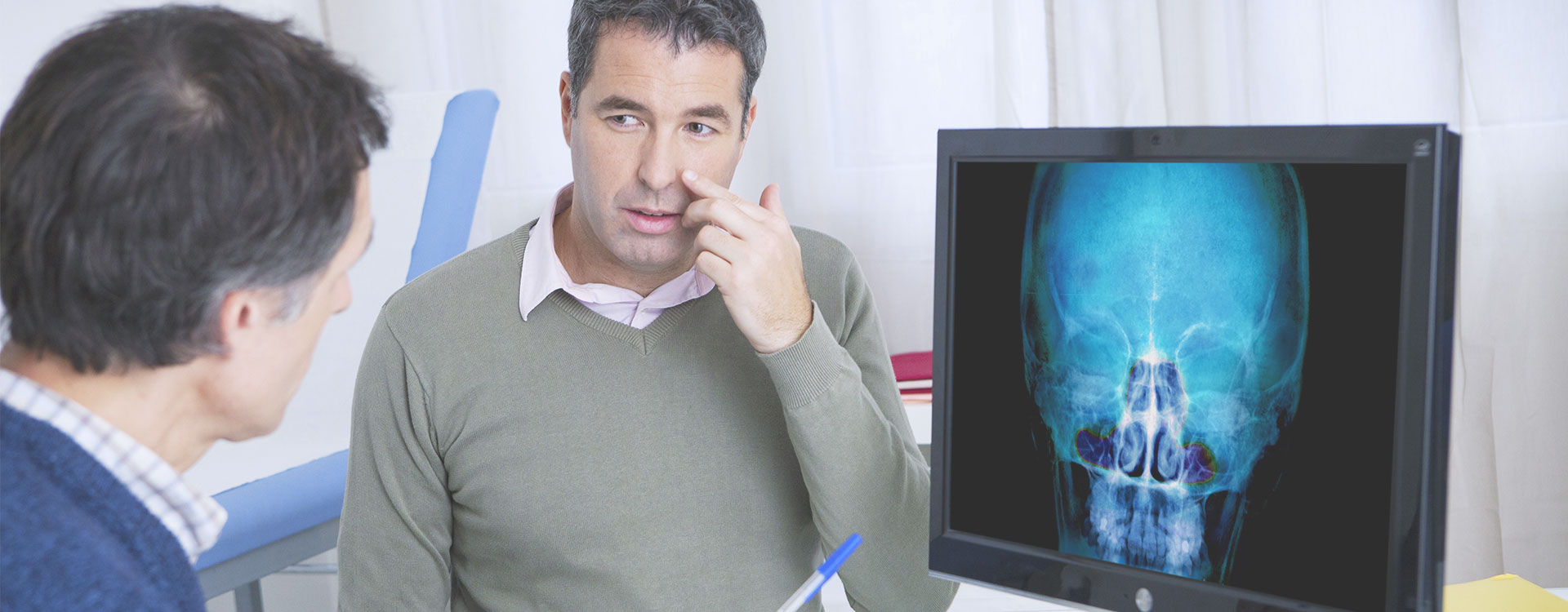Services
Ear
Ear Tubes
This is a relatively short procedure that involves placing small tubes through the eardrum to help the middle ear ventilate better. It is usually offered to patients with recurrent ear infections.
Hearing Loss Evaluation and Surgery
There are many types of hearing loss – each with different causes. Some may benefit from a surgery to correct the problem while others may benefit from hearing aids. The first step is a hearing test
Audiological Services
Hearing Evaluation and Testing, Hearing Aids, Dizziness Evaluation
There are many types of hearing loss – each with different causes. Some may benefit from hearing aids, while others may require surgical repair. Testing and evaluation will provide the first steps towards proper diagnosis. If hearing aids are required, the audiologists will prescribe two hearing aids because binaural hearing makes it easier to locate sound, understand speech and increases perception of volume. There are several different reasons one might require surgical repair to improve hearing including Sensorineural hearing loss, otosclerosis, and others that your physician will diagnose and provide surgical treatment options.
Surgical Repair of the Ear Drum
Officially called tympanoplasty and is one of the more commonly performed ear surgeries. This surgery is performed if the hole in your eardrum is large or if you have chronic ear infections not curable with antibiotics.
Nose
SINUSITIS SOLUTIONS
Endoscopic Sinus Surgery (ESS)
For some, medical therapy will not provide lasting relief from the symptoms of chronic or recurrent sinusitis. And balloon sinus dilation may not be an option.
In these instances, our doctors may suggest endoscopic sinus surgery, or ESS. The goal of ESS, like balloon sinus dilation, is to expand the sinus drainage pathways to help restore drainage and heal the sinus mucosa.
How Endoscopic Sinus Surgery Works
A doctor uses an endoscope, inserted through your nostrils, to view the passageways and sinus openings, and a series of micro-cutting instruments to remove obstructive or abnormal tissue. This tissue removal expands the openings to the sinuses and the pathways through which sinuses drain, helping clear sinuses and promote healing.
Clinical Benefits of Endoscopic Sinus Surgery
In multiple studies, patients who receive functional endoscopic sinus surgery show a statistically significant improvement in symptoms and quality of life following surgery.(I)
There are a number of approaches to ESS. Should you be a candidate for ESS, our doctors at Parker Sinus Center will discuss the option they recommend for you, as well as the risks associated with ESS.
Recovery From Endoscopic Sinus Surgery
Recovery times for ESS vary, based on the extent of the procedure. Many people return to normal activities within one to two weeks following surgery.(II)
References
| I. | ↑ | Impact of functional endoscopic sinus surgery on symptoms and quality of life in chronic rhino sinusitis. Damm M, Quante G, Jungehuelsing M, Stennart E. Laryngoscope. 2002 Feb: 112(2): 310-5 |
| II. | ↑ | Pain treatment and recovery after endoscopic sinus surgery. Kemppainen TP, Tuomilehto H, Kokki H, Seppa J, Nuutinen J. Laryngoscope. 2009 May-June: 321-327 |
Recurring and Chronic Sinus Infections
While some acute sinus infections can turn into chronic infections over time, most chronic sinus infections are caused by physical structure of your sinuses including narrow or deviated septum, can be brought on by infection or growths including nasal polyps, and swelling of the lining of your sinuses. Allergies tend to cause inflammation of the sinuses, as well.
Balloon Sinuplasty
Type of endoscopic nasal surgery that uses small inflatable balloon catheters to drain the large nasal sinuses and is typically used to treat cases of severe rhinosinusitis or sinus inflammation and blockage in the nose.
Click here for more information.
Office Balloon Sinus Dilation
Sinusitis sufferers–find instant relief that lasts
Office sinus dilation is a minimally invasive option that can be performed right here, in our offices. The goal of office sinus dilation is to reshape anatomy to expand sinus pathways and restore drainage. Here’s how it works:
The procedure utilizes small balloons placed in key places in the nose and sinus, which are then dilated to expand the sinus pathways. It may be an effective, lasting option for some patients whose symptoms do not resolve with medication.
The benefits of office sinus dilation include:
- Delivers instant, lasting relief I),II)
- Convenient, comfortable office procedureIII)
- Quick recovery—most patients return to normal activity in 24 hoursIV)
- May reduce healthcare costs
Discuss office sinus dilation with us today!
We are trained and experienced users of office sinus dilation technologies. Make an appointment at our office today to determine if balloon sinus dilation is right for you.
References
| I, IV. | ↑ | Stankiewicz J, Truitt T, Atkins J, Winegar B, Cink P, Raviv J, Henderson D, Tami T. Two-year results: transantral balloon dilation of the ethmoid infundibulum. Int Forum Allergy Rhinol. 2012 May; 2(3): 199-206. |
| II. | ↑ | Stankiewicz J, Tami T, Truitt T, Atkins J, Liepert D, Winger B. Transantral, endoscopically guided balloon dilatation of the ostiomeatal complex for chronic rhinosinusitis under local anesthesia. Am J of Rhinology. 2009 May-June; 321-327. |
| III. | ↑ | Gould, J. In-office balloon dilation: Procedure techniques and outcomes using a malleable multi-sinus dilation tool. ENT Journal. Vendome Healthcare Media, 19 Dec 2012. |
Sinusitis Treatment
The established clinic guidelines for initial treatment include medical therapy. Medical therapy may include a range of medications designed to address your particular illness and symptoms. Depending on your needs, recommended treatment may further to nasal steroids to decrease the swelling in the mucous membrane lining of the sinuses, antibiotics if a bacterial infections has formed, or decongestant nasal drops to soothe the mucous membrane and reduce swelling. Advanced treatments would include Balloon Sinus Dilation or Endoscopic Sinus Surgery.
ENT IMAGE GUIDED SINUS SURGERY
Deviated Septum Repair “Septoplasty”
A deviated septum can cause impaired breathing, nosebleeds and/ or snoring. Septoplasty is an outpatient procedure that removes crooked cartilage and/or bone from the nose to improve nasal breathing.
NASAL SEPTAL RECONSTRUCTION
RHINOPLASTY
Throat
Thyroidectomy
A surgical operation to remove a part or all of your thyroid. This procedure is usually performed after an initial evaluation of thyroid nodules found on neck ultrasound.
Parathyroidectomy
Parathyroids are small glands in the neck that control calcium levels. In some cases, one or more of them require removal if they have become overactive, causing abnormally high calcium levels.
Tonsilectomy and Adenoidectomy
This involves the surgical removal of the tonsils. The most common reasons for having this done are recurrent tonsillitis and enlargement of the tonsils causing obstruction of breathing during sleep.
Pediatric ENT Procedures
Children are more often susceptible to ENT conditions affected by chronic ear infections, tonsillitis and recurring repiratory tract infections. Highland Clinic ENT offers the following services:
- Tonsilectomy and Adenoidectomy
- Ear Tubes
- Sleep Apnea
Head and Neck
Facial Reconstructive Surgery
- Rhinoplasty, Cancer Reconstruction
- Cleft Lip Repair
- Cleft Palate Repair
- Facial Paralysis
- Facial Trauma Reconstruction
- Microtia Repair
Minimize Age, Maximize Beauty
- BOTOX
- Juvaderm
- Kybella
Snoring & Sleep Apnea Evaluation
Sleep Apnea is a common disorder that involves repeated breathing interruptions during sleep, occurring hundreds of times each night as a result of structural abnormalities or brain malfunctions. Obstructive Sleep Apnea is the most common form occurring when the soft tissue at the back of the throat closes thus blocking the airway. In Central Sleep Apnea, the airway remains open, but the brain does not send signals to the muscles involved in breathing. Mixes Sleep Apnea combines aspects of both types. Common symptoms include snoring interspersed with gasps or lack of breathing.







